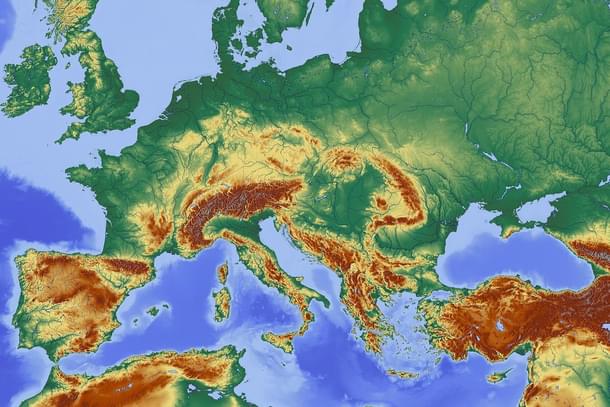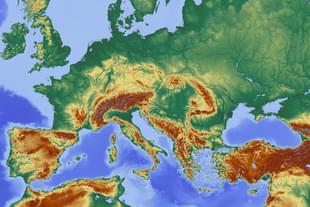Ideas
Homeland Of Indo-European Languages: An Unanswered Question
Anil Kumar Suri
May 11, 2024, 06:00 AM | Updated May 10, 2024, 06:25 PM IST
Save & read from anywhere!
Bookmark stories for easy access on any device or the Swarajya app.


The London University archaeologist, James Dayton had, in 1971, summarily dismissed the sensational theory proposed a few years ago by the Lithuanian archaeologist, Marija Gimbutas, that the European Bronze Age had been founded by pastoral nomads from the Steppe.
Gimbutas and others of her ilk believed these nomads had taken their practice of building burial mounds, or “kurgans”, all over Europe. But that was not all: the Steppe tribesmen also supposedly spread Indo-European (IE) languages over the length and breadth of Europe.
Much later, a branch of these Steppe pastoralists descended on Iran and India, bringing the Indo-Iranian languages to this part of the world.
Dayton disputed this sweeping theory for a very sound reason: European Bronze Age people were familiar with the use of tin and bronze, whereas Steppe cultures were not.
Indeed, no Steppe culture would learn the use of tin and alloying tin with copper to make bronze before around 2000 BCE, more than a millennium after the start of the European Bronze Age. Therefore, Dayton reasoned, it was pointless to look to cultures like the Yamnaya as the progenitors of the European Bronze Age.
What is interesting about Dayton’s dismissal of the hypothesis that had found some very enthusiastic proponents in the archaeological community is how summary it is. But he has a watertight case, and his rejection of the “Kurgan hypothesis”, as many call it, is entirely logical.
What is even more amazing is how archaeologists stuck to this hypothesis – and now geneticists claim to have found proof of it – without addressing this very valid disqualification.
The question of prehistoric language is speculative (“prehistoric” refers to the period when there was no writing, so language is by definition almost impossible to determine), but it is arguably dishonest to not explain the hard evidence of the tin, especially as it was flagged almost immediately after the Steppe was proposed as the homeland of the Indo-Europeans.
In fact, Dayton additionally pointed out the contemporaneous cultures of the Caucasus too seemed unaware of the use of tin, implying the Steppe cultures had not spread tin-bronze technology to their immediate south, let alone all the way to Europe. Recently, some other groups have sought to amend the Steppe homeland theory by proposing the Caucasus and Northern Iran as the homeland. Sadly, Dayton’s observation means the Caucasus and Iran cannot be considered the ultimate source of Europe’s Bronze Age either as these regions were unaware of tin as well.
The importance of tin
Sometime before 3000 BCE, a Chalcolithic culture somewhere appears to have discovered that adding tin to molten copper resulted in the formation of an alloy with mechanical properties superior to those of pure copper. Tin is a relatively rarely occurring metal, and its ore generally does not occur with that of copper. The discovery that the addition of this soft, very low melting metal to copper could produce a highly desirable alloy was revolutionary, as it provided a means for the rational control of the properties of the final alloy.
Also, for almost two millennia by 3000 BCE, it was known that some cuprous ores upon smelting produced a slightly silvery-looking metal. These ores contained arsenic, which ended up alloying with the copper smelted from these ores. Interestingly, although arsenic could be present as an impurity in copper obtained from some deposits, it could enhance the mechanical properties of the alloy over those of pure copper.
Today, we know that the best enhancement of mechanical properties is obtained with an arsenic content in the range, 4-8 per cent. Although ancient metal smelters had not isolated arsenic, it appears that by around 3000 BCE, they had developed strategies to regulate the amount of arsenic in copper (which they probably judged by colour) and hence were able to achieve some control on the properties of the produced alloy. Further, copper absorbs large amounts of air when melted, resulting in a porous, poor quality cast. The tendency of copper to absorb air when molten is reduced when tin or arsenic is added to it.
Tin-bronze appears to have been valued much more than arsenical copper, and those who controlled the supply and processing of tin-bronze appear to have quickly risen to the level of elite among the Bronze Age immigrants of Europe. This state of affairs continued for a very long time, and as late as in the Únětice Culture (2300—1600 BCE), royalty and noblemen had weapons of bronze, while commoners had to make do with copper ones.
The term, bronze, as used today means an alloy of copper and tin, and it was assumed that objects of this specific alloy had found widespread use after 3000 BCE.
The division of historical epochs in Chalcolithic and a subsequent Bronze Age has been in use for very long. However, when scholars tried to analyse “bronze” objects, they were quite shocked to find that none of them had any tin. Thus, the “Bronze Age” cultures of the Steppe and Caucasus such as the Yamnaya and the Maikop were not strictly Bronze Age. Nevertheless, the term, “Bronze Age” continues to be used for many post-3000 BCE cultures.
The state of Europe’s bronze technology
The bronze technology of the immigrants, who succeeded the Neolithic people in Europe after around 3000 BCE, was not incipient. The immigrants mostly worked with bronzes which had a tin content ranging between 5-12 per cent, and many objects had 7-10 per cent, which is the optimum range for obtaining the best mechanical properties.
Further, the European Bronze Age people used fairly pure copper to alloy with tin – most bronze objects had less than 1 per cent arsenic, if at all. At such low arsenic contents, there is no enhancement in the properties of the alloy. The European Bronze Age metalworkers clearly deliberately avoided adding tin to any copper containing more than 1 per cent arsenic (which, of course, they judged by appearance and properties, absent any means of directly measuring the arsenic content) because it would be wasting valuable and rare resources. Clearly, they had reached a fairly mature stage of technology.
We may not be sure about languages for which we have no written records anyway, but which ancestral population involved in the formation of the European Bronze Age population had such an advanced state of bronze technology by 3000 BCE itself?
If the temptation is to explain the arrival of bronzes in Europe away as the result of trade or exchange, how did this mature bronze technology appear abruptly in Europe, leapfrogging the Steppe, the Caucasus and Iran, all proposed as candidates for the homeland of the ancestors of the Bronze Age Europeans in major recent papers?
This is a question that needs to be answered before any definitive explanations for the origin and spread of IE languages can be found.
Anil Kumar is a materials scientist.





